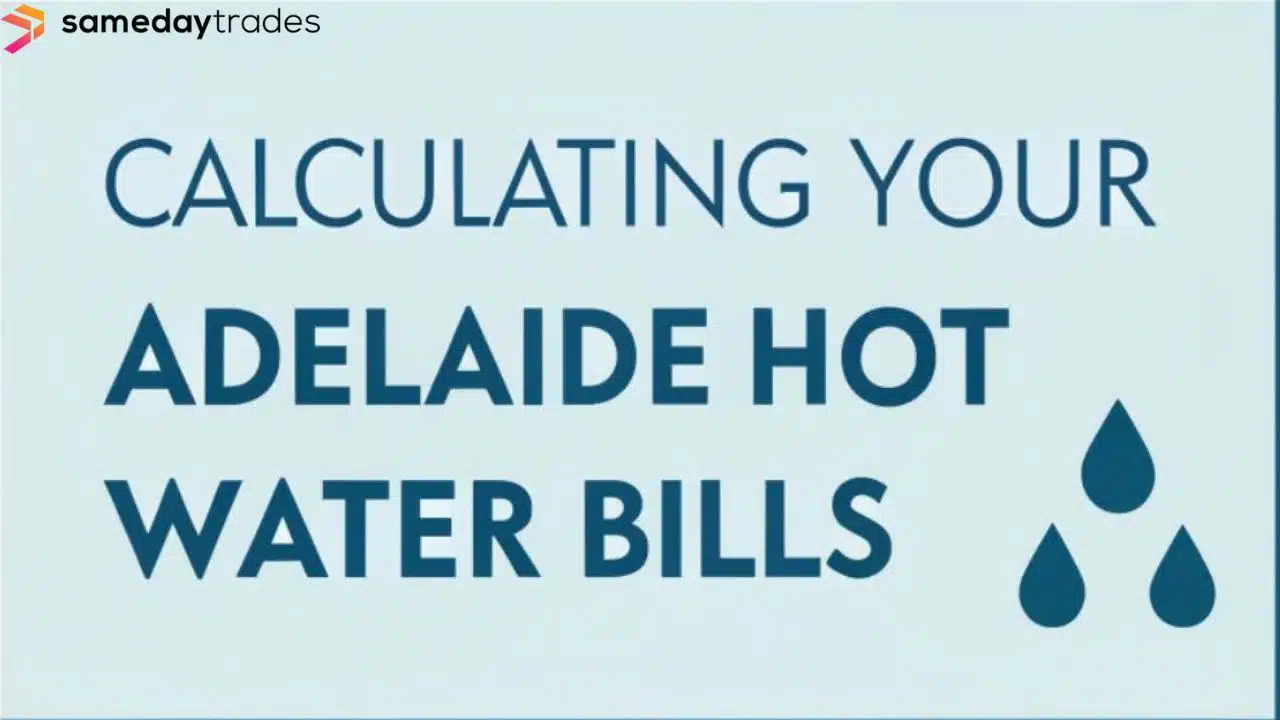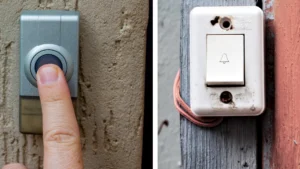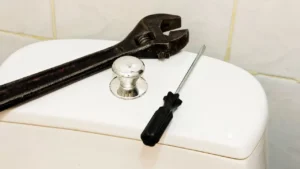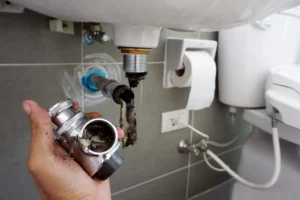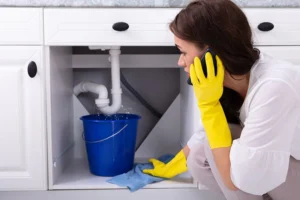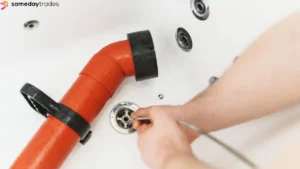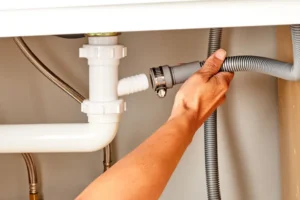Struggling with high hot water bills in Adelaide? The average resident spent $324 per quarter on water charges back in 2020. This blog will break down what affects your costs and give you simple ways to save money.
Factors Affecting Adelaide Hot Water Bills
Hot water bills in Adelaide can vary a lot, depending on your usage and how energy-efficient your system is. Other influences sneak in too, like pricing tiers and the type of heater you use.
Water usage and consumption patterns
Each day, an average person uses 190 litres of water. In a household of 2.5 people, this adds up to about 475 litres daily. Water use shoots up during summer and autumn, almost tripling compared to winter months.
Showers alone often take the lion’s share of hot water usage in homes.
Over 80% of household water becomes wastewater. This includes used water from showers, washing machines, and dishwashers. Efficient appliances like low-flow showerheads or dual-flush toilets can cut waste dramatically while reducing costs on your *water bill Adelaide*.
SA Water’s pricing tiers and charges
SA Water uses a tiered system to charge for water. Tier 1 costs $1.945 per kilolitre for up to 0.3836 kL daily use. Tier 2 charges $2.775 per kilolitre if you use between 0.3836 kL and 1.4247 kL daily, while Tier 3 costs $3.007 per kilolitre for anything above that amount.
A fixed supply fee of $67.85 is added each quarter, helping cover maintenance and access to your water supply line. Fortunately, this fee dropped by 10% in recent years, saving households some money! For an average Adelaide household of around three people, quarterly bills often range from $135 to $182 based on usage habits and tier rates applied.
Impact of energy source and water efficiency
Energy source plays a huge role in hot water costs. Gas is cheaper, costing 4.2 cents per megajoule, compared to electricity at 42 cents per kilowatt-hour. A gas water heater uses about 86.1 cents per hour, while an electric one costs 151 cents for the same time.
Water efficiency matters too. Older fixtures waste more water and energy than modern ones. Upgrading taps and installing dual-flush toilets can lower your bills quickly. Cutting down on wasted hot water reduces both usage and heating expenses significantly—saving dollars with every litre conserved!
Calculating Hot Water Running Costs
Hot water running costs can burn a hole in your pocket, depending on how much you use and the heater type. Knowing these costs can help you make smarter choices for savings.
Average hot water usage per person
Each person in Australia uses about 76 litres of hot water daily. That’s nearly the same as running a kitchen tap non-stop for five minutes! Heating this amount costs between 15 and 23 cents per day, depending on SA Water’s pricing tiers.
Using Tier 1 rates (15 cents), heating water for one person adds roughly $4.50 to the average electricity bill Adelaide homes see monthly. With multiple people, like in a three-person household, these costs grow quickly alongside your energy use.
Efficient habits save money and reduce waste!
Comparison of gas and electric hot water running costs
Gas and electric hot water systems both have their pros and cons, but the numbers don’t lie. Let’s put the costs side by side for a clearer picture.
| Factor | Electric Hot Water | Gas Hot Water |
|---|---|---|
| Hourly Running Cost | 151 cents/hour | 86.1 cents/hour |
| Energy Source Cost | 42 cents per kWh | 4.2 cents per MJ |
| Cost Difference | Electric system costs 57% more than gas | Cheaper by 57% |
| Best Scenario | Suited for homes with solar energy | Ideal for homes with natural gas access |
The numbers show gas is the budget-friendly option for most homes. Electric hot water works better if solar panels are in play. Both systems have their place, but their impact on your wallet? Worlds apart.
Understanding energy equivalence for different appliances
Electric and gas water heaters operate using different energy methods. A Rinnai 160 L electric storage tank uses 3.6 kW, equivalent to approximately 18.7 MJ per hour (1 kWh = 5.2 MJ).
Meanwhile, a Rinnai 170 L gas storage tank requires 20.5 MJ per hour to function. Electric systems transform power directly into heat, while gas systems utilise fuel combustion for warmth.
Understanding these figures assists in better cost comparison. For instance, while electricity may have a higher cost per unit than gas under Adelaide’s pricing tiers, it consumes fewer megajoules overall during operation time.
This comparison simplifies choosing an efficient system to achieve lower Adelaide hot water bills over time!
Hourly running costs for different water heater types
Some water heaters are more budget-friendly than others. To compare running costs clearly, here’s a breakdown in a simple table:
| Water Heater Type | Running Cost (Per Hour) |
|---|---|
| Electric Hot Water System | 151 cents |
| Gas Water Heater | 86.1 cents |
Gas heaters, as shown, are less expensive to run. An electric setup costs nearly double. Small changes in hourly costs can make a big dent in monthly bills!
Strategies to Reduce Hot Water Bills
Cutting back on hot water use can make a big difference. Simple changes at home could mean spending less and saving more over time.
Water usage reduction tactics at home
Saving water at home helps lower bills and conserves resources. Simple changes can make a big difference.
- Fix dripping taps quickly. A single leaking tap can waste up to 19,000 litres of water every year. That’s like throwing money away!
- Take shorter showers. Long showers use more hot water, increasing both your water and energy bills. Aim for 4-minute showers to save costs.
- Install dual-flush toilets. These save around 67% more water than older models by giving you the option of how much you flush each time.
- Wash clothes in cold water where possible. Modern washing machines perform well without hot water, saving energy while lowering your bills too.
- Run dishwashers only when full. A dishwasher uses about 10-15 litres per cycle in Australia; wasting this on small loads adds up quickly.
- Use low-flow showerheads or taps to reduce flow without compromising pressure, cutting household usage straight away.
- Water outdoor gardens early in the morning or late evening to minimise evaporation from sun heat during peak daylight hours.
- Upgrade appliances like washing machines or dishwashers that are labelled as energy and water-efficient, reducing consumption and energy use simultaneously.
Avoid wasting clean water needlessly; every drop matters!
Importance of annual servicing
Regular servicing stops costly breakdowns. It keeps hot water systems running smoothly, saving you money in the long run. Ignoring maintenance can lead to clogged pipes, corroding tanks or higher energy bills.
A plumber can spot and fix small issues before they grow into bigger problems.
Old systems lose efficiency fast without care. Annual checks also help meet lease agreement terms for tenants and landlords in Australia, protecting both parties. Well-maintained solar water heaters or heat pumps waste less energy too, reducing your carbon footprint while cutting costs.
Upgrading to continuous flow water heaters or solar hot water systems
Upgrading your water heater can slash costs and cut emissions. Older systems often waste more energy, which means higher bills.
- Continuous flow water heaters only heat water as needed. This can save money compared to storage systems, which keep water hot all day.
- Solar hot water systems use the sun’s energy. This drastically reduces running costs and greenhouse gas emissions.
- Systems over ten years old tend to be inefficient. Replacing them can lower both bills and environmental impact.
- Solar rebates and government incentives can make upgrades affordable in South Australia. Ask about these before buying.
- Adelaide homes with solar panels often benefit from feed-in tariffs. Use excess solar power for heating to maximise savings.
- Modern systems have better temperature control, ensuring greater comfort while saving energy.
- Switching also boosts property value, especially in areas like Adelaide, where energy-efficient homes attract buyers.
Conclusion
Saving on hot water bills in Adelaide doesn’t have to be a headache. Start by checking your usage and choosing efficient appliances, like solar or continuous flow systems. Small changes, like shorter showers or fixing leaks, can make a big splash in savings.
Regular servicing keeps your system humming and costs down. Spend smarter, not harder!
FAQs
How much is the average water bill for a 2-person household in Adelaide?
The average water bill for a 2-person household in Adelaide is typically around $250 to $300 per quarter, depending on usage and tiered pricing.
What does a kilolitre of water cost in South Australia?
In South Australia, the price of water per kilolitre varies by tier but usually starts at about $2.50 to $3.00 for basic usage.
How often do you pay water bills in Australia?
Water bills are generally issued quarterly, though some landlords or tenancy agreements may set different payment terms.
How much does hot water cost per month with gas systems?
A gas hot-water system can cost between $30 and $60 per month, depending on your gas meter readings and how much hot water you use.
What’s the difference between a hot-water bill and a regular water bill?
A regular water bill covers supply charges and all cold-water use from your taps or appliances like dishwashers, while a hot-water bill includes heating costs linked to electricity or gas tariffs.
Can solar collectors reduce my Adelaide hot-water costs?
Yes! Solar collectors can lower your monthly expenses by using free energy from the sun instead of relying solely on grid electricity or gas heating systems.


